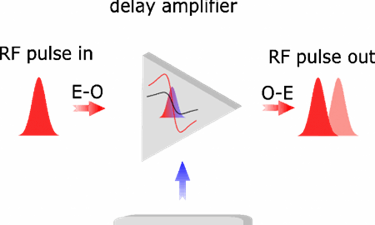Sub-Nanosecond RF Signal Control Can Provide Wider Bandwidth
By Jof Enriquez,
Follow me on Twitter @jofenriq

Researchers at the University of Sydney have developed a new technique to control radio frequency (RF) signals on an integrated photonic chip at tuning speeds faster than a nanosecond. The achievement could alleviate bandwidth limitations caused by a growing number of interconnected wireless devices.
“Nowadays, there are 10 billion mobile devices connected to the wireless network (reported by Cisco last year) and all require bandwidth and capacity,” said Yang Liu, who is a PhD candidate at the School of Physics, and one of the researchers at the university's ARC Centre for Ultrahigh bandwidth Devices for Optical Systems (CUDOS).
“By creating very fast tunable delay lines on chip, one eventually can provide broader bandwidth instantaneously to more users," Liu said in a news release.
One of the most recent developments in compact photonic integration involves the use of microwave photonic (MWP) delay lines based on optical resonant devices, such as ring resonators. Faster than current RF techniques, these optical counterparts rely on relatively slow thermo-optic effect by on-chip heaters, which can achieve tuning speeds in milliseconds (1/1000 of a second). Also, these optical devices still pose a challenge to fabricate and power up.
“To circumvent these problems, we developed a simple technique based on optical control with response time faster than one nanosecond: a billionth of a second – this is a million times faster than thermal heating,” said Liu.
In the journal Optica, Liu and co-authors Amol Choudhary, David Marpaung, and Benjamin J. Eggleton wrote about “an optical tuning approach to controlling and switching RF time delay from integrated optical ring resonators with a fast tuning speed” that allows “seamless tuning between pulse delay and advancement, as well as gigahertz switch capability without modifying the properties of resonators.”
Eggleton, who is CUDOS director and head of the Nanoscale Photonics Circuits AINST flagship program at the Australian Institute for Nanoscale Science and Technology (AINST), says the team’s technique can be applied within ten years in different applications, namely the internet of things (IoT), fifth-generation (5G) communications, smart homes, smart cities, and next-generation military radars and phased-array antennas.
CUDOS researchers will next work on integrating their technology in small mobile devices.
The research is supported by the Australian Research Council through CUDOS, which has pioneered developments in next-generation photonics, like demonstrating a soliton-effect pulse compression in a silicon photonic crystal.
